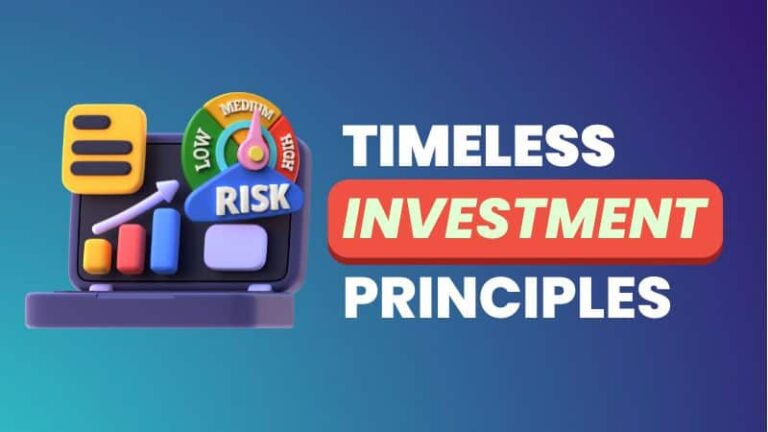9 Best Investments in the Philippines 2025 [Compared]
Looking to grow your hard-earned money? This list of the best investments in the Philippines can help you earn more…

For low-risk and guaranteed returns, the best investment in the Philippines is the Pag-IBIG MP2 Savings Program. It’s a solid choice, offering high interest rates with government backing. Index Funds is the best option for a low-maintenance fund with higher returns. For higher returns but more risk, stocks or real estate can provide significant growth over time.
Looking to grow your hard-earned money? This list of the best investments in the Philippines can help you earn more from your capital. These options are not only effective and doable but also legit—proven by many Filipinos who’ve already seen their money grow.
Whether you’re just starting out or looking to diversify, there’s something here for everyone. Want to know where you can invest with confidence and get solid returns? Keep reading to discover the best investment opportunities in the Philippines that could take your finances to the next level.
Key Takeaways
- Choose Index Funds for a low maintenance investment portfolio that is proven to generate earnings over time.
- For high returns, consider stocks, cryptocurrency, or real estate—ideal for those with a higher risk tolerance.
- For secure, steady growth, Pag-IBIG MP2 and government bonds are excellent low-risk options.
- Start early, diversify your portfolio, and align your investments with your financial goals.
- Whether you’re a beginner or experienced, taking informed steps today will help you achieve long-term financial success.
- Smart investing today can lead to a wealthier and more secure future in 2025.
9 Best Investment Options in the Philippines for 2025
Whether you’re a beginner or an experienced investor, the best investments in the Philippines offer a range of options to help you grow your money. Below, we explore some of the top investment options available in 2025 to help you make informed decisions.

1. Index Funds
Index Funds are a type of investment that lets you put your money into a basket of stocks or assets that mirror a specific market index, like the Philippine Stock Exchange Index (PSEi) or even global ones like the S&P 500. Think of it as buying a small piece of many companies at once, instead of betting on just one stock.
You earn from index funds in two main ways: capital gains (when the value of the fund increases over time) and dividends (small payouts from the companies in the index, if applicable).
The expected earnings depend on the market’s performance, but historically, index funds tied to major indices like the PSEi or S&P 500 have delivered average annual returns of 5-10% in the Philippines and even higher globally (around 7-12% for S&P 500 funds) over the long term.
Pros and Cons of Investing in Index Funds
- Pros: Index funds usually have lower fees compared to actively managed funds since they just follow an index, not pay for fancy fund managers. Also, it’s easy and accessible. You don’t need to be a stock market guru to start. And the best part is, over time, index funds often outperform many actively managed funds, especially with global indices like the S&P 500, making it a solid choice for long-term goals like buying a condo or retiring early .
- Cons: If the market crashes, your fund’s value drops too. It’s like when a storm hits and delays your plans—you just have to wait it out. Also, you have limited control: you can’t pick specific stocks in the fund; you’re tied to the index’s performance.
How to Get Started in Index Funds in the Philippines
- Learn the basics and set a goal: First, understand what index funds are (as explained above) and decide why you’re investing—maybe for a down payment on a house in five years or a dream trip to Boracay. Having a goal keeps you motivated.
- Research available index funds in the Philippines: Look for funds that track the PSEi, like the SB Philippine Equity Index Fund, which was recognized as a top performer in 2025 by CFA Society Philippines . There are also global index funds accessible through local banks or brokers, like those tied to the S&P 500, which you can explore for broader exposure .
- Choose a platform or provider: Open an account with a trusted bank, investment house, or online platform that offers index funds. Popular options in the Philippines include BPI, ATRAM, or Maya, which cater to retail investors like us. Many of these have apps, making it as easy as ordering food online .
- Check fees and minimum investment: Look at the fund’s expense ratio (the annual fee) and minimum investment amount. Some funds start as low as ₱1,000, perfect for millennials on a budget. Go for low-cost options to maximize your returns .
- Start small and invest regularly: Begin with what you can afford, even if it’s just ₱1,000 a month. Use a strategy called dollar-cost averaging, where you invest a fixed amount regularly, no matter if the market is up or down.
- Monitor and stay patient: Check your investment every few months through your provider’s app or website, but don’t panic over small dips. Remember, this is a long-term game—think of it as planting a seed that grows into a tree over years.
If you’ve just started out your investing journey, read our ultimate investing guide for beginners.

2. Stock Market
The Philippine stock market allows you to buy shares of publicly listed companies, giving you partial ownership of the business. When these companies grow and perform well, their stock prices increase, and so does the value of your investment. Stocks are known for offering high returns over the long term, making them a popular option for those willing to take on more risk.
Pros and Cons of Investing in Stocks
- Pros: Potential for high returns, dividends from profitable companies, and the ability to sell shares easily.
- Cons: High volatility, meaning stock prices can fluctuate significantly. There’s also a risk of losing money if the company performs poorly.
How to Get Started in the Philippine Stock Market
- Open a brokerage account: Choose a reputable online broker that operates in the Philippines.
- Fund your account: Deposit the amount you want to invest.
- Research stocks: Look into companies listed on the Philippine Stock Exchange (PSE).
- Buy shares: Once you’ve chosen a company, place a buy order through your broker’s platform.
- Monitor your investments: Keep track of your stocks and adjust your portfolio as needed.
Read our detailed guide on investing in the Philippine stock market.

3. Mutual Funds
A mutual fund pools money from multiple investors to invest in a diversified portfolio of stocks, bonds, or other securities. A fund manager oversees the fund, making it an easier option for beginners who don’t have time to manage individual investments.
Types of Mutual Funds in the Philippines
There are 4 types of mutual funds:
- Equity Funds: Invest primarily in stocks for higher returns but with more risk.
- Bond Funds: Focus on government and corporate bonds, offering lower risk and steady returns.
- Balanced Funds: A mix of both stocks and bonds, providing moderate risk and returns.
- Money Market Funds: Invest in short-term securities for low risk and lower returns.
Pros and Cons of Mutual Fund Investments
- Pros: Professional management, diversification, and the ability to start with a relatively small amount.
- Cons: Management fees can reduce returns, and there’s always market risk involved.
How to Invest in Mutual Funds in the Philippines
- Choose a mutual fund provider: Look for trusted mutual fund companies like banks or investment firms that offer mutual funds.
- Open an investment account: Complete the necessary forms to open a mutual fund account.
- Select a fund: Choose from equity, bond, balanced, or money market funds based on your risk tolerance.
- Invest your money: Deposit the minimum required amount to start your investment.
- Monitor your fund: Regularly review your fund’s performance and make adjustments if needed.

4. UITFs (Unit Investment Trust Funds)
UITFs are similar to mutual funds but are managed by banks rather than investment companies. Investors pool their money into a trust fund, which is managed by a professional to invest in a diversified portfolio of assets.
Types of UITFs Available in the Philippines
- Equity Funds: Invest mainly in stocks for potentially higher returns.
- Bond Funds: Focus on fixed-income assets like government and corporate bonds.
- Balanced Funds: A combination of stocks and bonds for moderate growth.
Pros and Cons of UITFs
- Pros: Managed by professionals, diversified portfolio, and lower entry point compared to stocks.
- Cons: Similar to mutual funds, fees can eat into returns, and market risks still apply.
How to Get Started in UITFs in the Philippines
- Choose a bank: Select one of the best banks in the Philippines that offer Unit Investment Trust Funds (UITFs).
- Open a UITF account: Fill out the necessary forms to open a UITF account with your chosen bank.
- Select a fund: Pick from equity, bond, balanced, or money market UITFs based on your risk profile.
- Invest your money: Deposit the minimum required amount to start your investment.
- Monitor your investments: Regularly check the performance of your UITF and adjust your portfolio if needed.

5. Pag-IBIG MP2 Savings Program
The Pag-IBIG MP2 Savings Program is a government-backed savings program that offers high interest rates (up to 7% or more) with tax-free benefits. It is a low-risk investment option, making it ideal for conservative investors looking for a guaranteed return.
Pros and Cons of Pag-IBIG MP2
- Pros: Guaranteed returns, tax-free, backed by the government, and no fees.
- Cons: Limited flexibility in terms of early withdrawal, and returns may vary annually.
How to Start Investing in Pag-ibig MP2
- Register for Pag-IBIG MP2: Visit the Pag-IBIG Fund website or go to a Pag-IBIG branch to open an MP2 Savings account.
- Fund your account: Deposit a minimum of ₱500 to start your savings.
- Choose your contribution method: Set up regular contributions via salary deduction, online bank transfer, or over-the-counter payments.
- Track your savings: Monitor your MP2 account online through the Pag-IBIG Fund website.
- Withdraw your earnings: After the 5-year maturity period, withdraw your savings plus dividends, or reinvest for another 5 years.

6. Real Estate
Real estate is a tangible asset that can offer both capital appreciation and rental income. The Philippine property market has been growing steadily, making it a solid long-term investment.
Types of Real Estate Investments
- Residential Properties: Buy-to-rent condos or houses.
- Commercial Properties: Office spaces or retail establishments.
- Rental Properties: Earn passive income through monthly rent from tenants.
Pros and Cons of Real Estate Investments
- Pros: High potential for capital appreciation, passive income from rentals, and tangible asset ownership.
- Cons: Requires substantial capital upfront, ongoing maintenance costs, and the risk of property value depreciation.
How to Start Investing in Real Estate Properties in the Philippines
These are the steps to get started in real estate investing. You can also read our detailed guide on buying a property in the Philippines.
- Research the market: Study property trends, high-growth locations, and types of real estate (residential, commercial, or rental) that fit your investment goals.
- Assess your finances: Determine your budget and explore financing options, such as bank loans or Pag-IBIG housing loans.
- Find a property: Work with a licensed real estate agent or developer to find properties that match your criteria and budget. Tip: You may also want to consider buying foreclosed properties for a bargain.
- Do due diligence: Verify the property’s title, legal status, and potential return on investment (ROI) through research and property inspections.
- Make the purchase: Finalize the transaction by securing financing (if needed) and completing legal documentation with a notary or lawyer.
- Manage or lease the property: If it’s a rental investment, find tenants or hire a property management service to handle leasing and maintenance.
P.S. Check out our other post if you’re interested in REITs investing.

7. Cryptocurrency
Cryptocurrency is a digital currency that operates on blockchain technology. It’s decentralized, meaning it’s not controlled by any government or financial institution. Popular options in the Philippines include Bitcoin and Ethereum.
Suggested post: Detailed Guide to Cryptocurrenty Investing
Pros and Cons of Cryptocurrency Investments
- Pros: High potential returns, borderless transactions, and growing adoption.
- Cons: Extremely volatile, can lose significant value quickly, and limited regulation.
How to Get Started Investing in Crypto
- Choose a crypto exchange: Select a trusted platform like Binance, Coins, or PDAX.
- Create an account: Set up and verify your account.
- Fund your wallet: Deposit money via bank transfer or other methods.
- Buy cryptocurrency: Choose a coin (e.g., Bitcoin) and make your purchase.
- Store your crypto securely: Use a hardware wallet or keep it on a secure platform.

8. Government Bonds
Government bonds are debt securities issued by the Philippine government. When you buy a bond, you’re essentially lending money to the government in exchange for steady interest payments.
Benefits of Investing in Government Bonds
- Low-risk: Backed by the government, making it one of the safest investments.
- Steady returns: Receive fixed interest payments over time.
How to Invest in Government Bonds in the Philippines
- Open an account with a bank or broker: Choose a financial institution that offers government bonds.
- Choose a bond series: Select from different bond maturities and interest rates.
- Invest: Make your purchase and receive interest payments over time.

9. VUL (Variable Universal Life Insurance)
Variable Universal Life (VUL) insurance combines life insurance coverage with an investment component. Part of your premium goes toward an investment fund, which can grow over time, while the rest provides life insurance protection.
Pros and Cons of VUL
- Pros: Combines insurance and investment, potential for growth, and long-term financial security.
- Cons: Fees can be high, and it requires a long-term commitment to see significant returns.
How to Get Started with VUL in the Philippines
- Assess Your Financial Goals and Risk Tolerance: Before diving into a Variable Universal Life (VUL) policy, consider your financial goals and how much risk you’re willing to take.
- Research Insurance Providers: Look for reputable life insurance companies in the Philippines that offer VUL policies, such as Sun Life, AXA Philippines, or Philam Life.
- Consult with a Financial Advisor: Speak with a licensed financial advisor who can explain the ins and outs of VUL policies.
- Choose Your Coverage and Investment Options: Once you’ve selected a provider, decide how much life insurance coverage you need and which investment funds you want to allocate your premiums to.
- Complete the Application Process: Fill out the necessary forms and submit your application. Most insurance providers will require you to undergo a medical exam to assess your health condition and determine the premium.
- Monitor and Adjust Your Policy: Depending on market conditions and your personal objectives, you can adjust your fund allocations or increase your premiums to grow your investment further.
Why You Should Start Investing in the Philippines
Investing is one of the smartest ways to make your money work for you, especially in the Philippines.
Whether you’re aiming for financial freedom, protecting your savings from inflation, or preparing for future expenses like retirement, the right investment options can help you achieve these goals.
By understanding the benefits and acting early, you can maximize the potential of the best investments in the Philippines.

1. The Importance of Financial Freedom
Achieving financial freedom means having enough assets or passive income to cover your living expenses without depending solely on your salary.
By investing in the best investment options in the Philippines, you can create additional streams of income. Over time, this gives you more control over your life and the freedom to pursue your dreams without worrying about money.

2. Beating Inflation with Investments
Inflation slowly erodes the value of your money, meaning the same amount will buy less in the future. If you leave your money in a regular savings account, it likely won’t grow fast enough to keep up with rising prices. Investing in high-return investments like the Philippine stock market or real estate helps your money grow faster than inflation, preserving your purchasing power.

3. Building Wealth for the Future
Whether you’re saving for retirement, a dream home, or your children’s education, investing is key to growing your wealth over time. The best investments in the Philippines offer opportunities to compound your money, meaning your earnings generate even more earnings. By starting early and choosing the right assets, you can build a financial cushion for major life goals and unexpected expenses.
Factors to Consider Before Investing in the Philippines
Before diving into the best investments in the Philippines, it’s crucial to evaluate a few key factors that will guide your decisions.
With careful planning, you can better position yourself for long-term growth and minimize potential losses.
a. Risk Tolerance
Risk tolerance refers to how much risk you’re willing to take with your investments. Some options, like the Philippine stock market, offer high returns but come with greater volatility, meaning your investment’s value can fluctuate significantly.
If you prefer stability, lower-risk options like government bonds or the Pag-IBIG MP2 Savings Program may be more suitable. Knowing your risk tolerance helps you choose investment options that align with your comfort level, so you can avoid unnecessary stress or panic during market downturns.
b. Investment Goals and Time Horizon
Your investment goals and time horizon—the length of time you plan to keep your money invested—are key factors in deciding where to put your money.
If you’re saving for a short-term goal like a car or vacation, safer, more liquid investments are ideal. For long-term goals like retirement, you can afford to take on more risk with high-return investments, allowing your money to grow over time.
c. Available Capital and Diversification
How much money you have to invest is another important consideration. Some investments, like real estate, require significant upfront capital, whereas others, like mutual funds or UITFs, allow you to start with smaller amounts.
Regardless of your starting capital, diversification—spreading your money across different types of investments—helps reduce risk. By investing in a mix of assets like stocks, bonds, and real estate, you can protect your portfolio from losses in any one area, ensuring a more balanced and stable growth.
Comparing the Best Investment Options in the Philippines
When deciding on the best investments in the Philippines, it’s important to weigh your risk tolerance and financial goals.
Some investments offer higher returns but come with more risk, while others provide steady growth with less volatility. Below, we’ll compare high-risk, high-reward options with safer, steady-growth investments, and offer recommendations for beginners.
High-Risk, High-Reward Investments
For those willing to take on greater risk in exchange for potentially higher returns, there are a few standout options:
1. Stocks
Investing in the Philippine stock market can yield significant returns over time, especially if you pick stocks from high-performing companies.
However, stock prices can fluctuate dramatically, so you need to be prepared for potential losses during market downturns.
2. Cryptocurrency
Cryptocurrencies like Bitcoin and Ethereum are known for their extreme volatility. While some investors have seen massive gains in short periods, the market can also experience sharp declines.
Due to its speculative nature, only those with a high-risk tolerance should venture into cryptocurrency.
3. Real Estate
Real estate investments can offer both capital appreciation and rental income. Over time, property values in prime locations tend to increase, but you’ll need significant starting capital and must be prepared for long-term commitments.
There’s also the risk of property value depreciation during economic downturns.
Low-Risk, Steady-Growth Investments
If you prefer safer investment options that provide steady returns, consider the following:
1. Pag-ibig MP2
This government-backed savings program offers one of the highest guaranteed returns in the market, making it a great option for conservative investors. Your capital is safe, and the returns are tax-free.
2. Government Bonds
As one of the safest forms of investment, government bonds provide fixed-income returns over time.
Although the interest rates may be lower than other investments, the level of risk is minimal, making it ideal for those who prioritize safety.
3. Mutual Funds
A mutual fund offers diversification by pooling money from multiple investors to invest in a balanced portfolio of stocks, bonds, or money market instruments.
While not risk-free, mutual funds tend to be more stable than individual stocks and offer moderate growth with professional management.
Best Investments for Beginners
If you’re just starting out with investing, it’s important to choose options that are simple, low-risk, and require minimal management. Here are two options ideal for beginners:
1. Pag-ibig MP2
With its guaranteed returns, low risk, and easy application process, the Pag-IBIG MP2 savings program is one of the best investment options for beginners in the Philippines.
It requires only a small initial contribution and is backed by the government, making it both accessible and reliable.
2. Mutual Funds
Mutual funds provide beginners with the benefit of professional management and diversification, reducing the risk associated with investing in individual stocks.
You can start with a small amount, and over time, your investment can grow steadily with minimal effort on your part.
Frequently-Asked Questions
What are the best ways to increase my savings in the Philippines?
The best ways to grow your savings in the Philippines include investing in government-backed programs like Pag-IBIG MP2, low-risk mutual funds, or high-interest savings accounts. Additionally, you can explore long-term investments such as the Philippine stock market or real estate, depending on your risk tolerance.
Which investment options will offer the best returns in the Philippines in 2025?
High-return investment options include the Philippine stock market, real estate, and cryptocurrency for those with a higher risk tolerance. For safer, steady growth, Pag-IBIG MP2 and government bonds are excellent choices.
How can I invest ₱10,000 wisely?
You can invest ₱10,000 in mutual funds, UITFs, or the Pag-IBIG MP2 Savings Program, all of which require minimal starting capital and offer diversification. For more risk and potentially higher returns, you could consider buying a few shares in the Philippine stock market.
What are the top places to invest ₱5,000?
With Php 5,000 pesos, you can start investing in Pag-IBIG MP2, a mutual fund, or a Unit Investment Trust Fund (UITF)u, all of which allow for low starting amounts and provide a balance between risk and reward.
Which investments are ideal for beginners in the Philippines?
Pag-IBIG MP2 Savings Program and mutual funds are ideal for beginners due to their low-risk nature and ease of access. These options allow you to start with minimal capital while offering steady growth over time.
What is the most secure investment option available right now?
The most secure investment option in the Philippines is government bonds, as they are backed by the government and provide guaranteed, steady returns. Pag-IBIG MP2 Savings Program is also a low-risk, secure investment with tax-free interest.
Is Pag-IBIG MP2 a smart investment choice?
Pag-IBIG MP2 is a smart investment choice for conservative investors looking for guaranteed, tax-free returns with minimal risk. It’s particularly appealing due to its government backing and high interest rates compared to traditional savings accounts.
Are there any completely risk-free investments?
There is no such thing as a completely risk-free investment, but government bonds and the Pag-IBIG MP2 Savings Program come close, as they offer reliable returns with very low risk. However, even these options can be subject to inflation risk.
What are the best places to put my money for growth?
For growth, you can consider investing in a diversified portfolio that includes stocks, mutual funds, and real estate. If you’re looking for low-risk options, the Pag-IBIG MP2 Savings Program and government bonds are good alternatives.
Conclusion
Finding the best investments in the Philippines doesn’t have to be overwhelming. Whether you’re looking for high-risk, high-reward options like stocks and cryptocurrency, or safer, steady-growth choices like Pag-IBIG MP2 and government bonds, there’s an investment out there to suit your financial goals and risk tolerance.
By taking the time to understand your options and starting early, you’re already on the right path to growing your hard-earned money. Remember, investing is a journey—every step you take today brings you closer to financial freedom tomorrow. Thanks for reading, and here’s to a brighter, wealthier future!





